Was this past Christmas season a bust for you? I suppose after the blizzard, if you had electricity you were way ahead of a lot of people, and being able to afford a can of knock-off Spam in today’s economy put you that much higher up (our Christmas feast consisted of a Quicken loan denial letter and some bouillon cubes). At least we could sit down for some serious holiday TV and movie viewing.
By Paul Mavis
Headlining our Christmas marathon was one our favorites, the 1995 British TV special, Knowing Me, Knowing Yule…with Alan Partridge, starring the brilliant Steve Coogan. You can watch that special in the big 13-disc set from BBC Video, The Steve Coogan Collection, released a few years ago.
Click to order The Steve Coogan Collection:
Gathering together over 24 hours of non-stop Coogan hilarity, The Steve Coogan Collection has many of his early TV series and one-off specials, including Paul and Pauline Calf’s Video Diaries, Knowing Me, Knowing You…With Alan Partridge, Coogan’s Run, I’m Alan Partridge (Series 1), The Tony Ferrino Phenomenon, Dr. Terrible’s House of Horrible, I’m Alan Partridge (Series 2), Paul and Pauline Calf’s Cheese and Ham Sandwich, and Saxondale, along with plenty of bonus extras, including commentaries and some of Coogan’s early stand-up bits.
Having been a confirmed Coogan/Partridge fan for years and years (“Back of the net!”), it’s difficult for me to grasp how Coogan still hasn’t “crossed over” into the American moviegoing consciousness as a lead actor. While previous big screen efforts have either failed outright (the god-awful Jackie Chan remake of Around the World in 80 Days comes to mind), or underwhelmed (Hamlet 2), his “hits” have been critically esteemed but scored only smaller box office returns (Stan & Ollie and Philomena). Why he’s not seen as a successor to actors like Alec Guinness and Peter Sellers—and why he hasn’t had huge international hits as they did—is hard to say. Perhaps he’s better known on streaming services (I understand his big-screen Alan Partridge: Alpha Papa, which didn’t make a ripple at the American box office, is a consistent performer on various platforms).
Alan Partridge is still certainly his best-known creation (of which he readily admits he had collaborators). However, Partridge is just one of many memorably funny characters he’s created. His facility with accents and his obvious delight in wearing complicated makeup designs to transform himself into his various hilarious characters (along with his efforts over time to evolve into a more varied, multi-faceted character actor—not just a “comedian”), draws an obvious parallel to Sellers, a connection which hopefully becomes stronger over time. Let’s look at what’s offered in The Steve Coogan Collection.
PAUL AND PAULINE CALF’S VIDEO DIARIES
Originally airing in 1993, Paul Calf’s Video Diary saw Coogan expanding on the Paul Calf character that had gained Coogan national recognition in the U.K. when he appeared on the popular Channel 4 variety show, Saturday Zoo (if you really want to start at the “beginning” of this set, those stand-up appearances are included as a bonus feature on the Paul and Pauline Calf’s Cheese and Ham Sandwich disc, which we’ll look at later on in the review). The character, a drunken, unemployed yob from the tough northern city of Manchester who enthusiastically “likes life”…if life consists of watching porn, getting pissed, and looking for punch-ups, hit it big with late-night TV audiences, resulting in this half-hour special.
Shot with a shaky, hand-held camera look just as it would appear if tipsy Paul or one of his friends had decided to document a day in the life of a typical Mancunian tosser, Paul Calf’s Video Diary begins with Paul’s depressingly small bedroom in his mother’s horrible council flat (he’s looking unsuccessfully for some clean underwear), and ends on an equally grim-but-funny note as he shares an unhappy New Year’s Eve moment with his ex-girlfriend, Julie (Sally Rogers). In between, Paul burps, smokes, gets pissed, punches out his new mate Roland (Patrick Marber), a former college student (Paul hates students, frequently calling them his favorite epitaph, “bag of shite”), gets a job at a vegetarian restaurant to impress a girl who already has a boyfriend, discusses Chuck Norris vs. Sylvester Stallone with his best mate, Fat Bob (John Thomson), enlists his slag sister Pauline (Coogan in drag) to shag Julie’s boyfriend to get her jealous so she’ll come back to Paul, and smashes up the wrong car.
Right here, at the beginning of Coogan’s career in the national spotlight, you can see many of the elements of his comedy that he’ll refine in later characters such as Alan Partridge or Tommy Saxondale—most importantly, Coogan finds an element of almost sweet sadness for characters we really shouldn’t care about, considering their not-inconsiderable faults (a trick of characterization that the best comedians always employed, from Chaplin to Gleason). Paul’s a lout who sounds like, on paper, someone we wouldn’t ever want to meet, but Coogan’s small stature and the ridiculous costuming he’s chosen for Paul (bleached shag mullet, droopy mustache, loud, mixed-matched clothes) makes us laugh first, and then garners our sympathy. And key to his character: he always manages an apology for his bad behavior, even when he and everyone else knows he’ll be right back to his dodgy ways the minute the beer starts flowing. Written by Steve Coogan, Patrick Marber, and Henry Normal, and directed by Geoff Posner, Paul Calf’s Video Diary is a trim little laugh-getter that well showcases Coogan’s already- considerable comedic skills.
Following the success of Paul Calf’s Video Diary in December of 1993, the same creative team behind that special delivered a follow-up in 1994, Pauline Calf’s Wedding Video, with Coogan reprising the brother and sister team. Framed like a memory video shot by Paul for Pauline’s upcoming nuptials, this fast-moving, riotous half-hour special focuses much more on the Pauline character (with Paul often heard making snide, vulgar remarks off-camera as he films) as she readies herself to marry her shady drug-dealing Greek boyfriend, Spiros (played to grotesque perfection by co-writer Patrick Marber).
Highlights include a closer look at Paul’s Mum’s (Sandra Gough) hideous living room (I love it when company comes and she nonchalantly hides a plate with food on it under the couch cushion); Spiros discussing his hammering sex with Pauline, making Paul ill in the process; Pauline breaking a girlfriend’s arm in a boozy punch-up; Mark’s (John Hannah) sidesplitting graveside poem that ends with him screaming about the corpse getting raped in Hell by Cerberus the Three-Headed Dog; and the show’s best joke: Mum describing her wedding where her husband punched the priest for looking at her, a guest peeing in the fountain, and the best man feeling her up, as “the happiest day of her life.” You don’t have to be from Manchester or even England to find all of this low-class lampooning desperately funny. “Paul and Pauline Calf” will show up a few more times in this box set.
KNOWING ME, KNOWING YOU…WITH ALAN PARTRIDGE
In 1994, having successfully launched his clueless sports announcer Alan Partridge on the radio series, On the Hour, and later with spots on its television version, The Day Today, Coogan was given a shot at bringing the marvelously asinine Partridge to series television with this grotesque parody of the British chat show genre. This first series has a lighter emphasis on gags and jokes, with the Partridge character still treated as an unlikable buffoon with little redeeming value (at least he has our pity in the later I’m Alan Partridge). And reliably, the jokes lampooning the chat show genre are almost always right on target, so much so that apparently some British viewers unfamiliar with the character assumed Alan Partridge was a real person, and the show was legit. Created and written by Coogan, Patrick Marber again, and Armando Iannucci, Knowing Me, Knowing You…With Alan Partridge, which henceforth shall be known by Alan’s own abbreviation, KMKY…WAP (pronounced: “Kim Kee Wap!”) features Marber and regular cast members Doon Mackichan, Rebecca Front and David Schneider (who also contributed to the scripts) in six episodes of increasingly bizarre chat show shenanigans.
Like any comedy, it’s virtually impossible to truly convey in a written review what makes a show funny, particularly if half the joke is in the visuals. I can describe the various outrageous events that happen in the faux chat show episodes of KMKY…WAP, such as the Paris episode, where a French punk/porn clown mime act simulates rude sex on the stage, and where Alan stridently insists to the audience, “The French do chomp on onions all day and go, ‘Hon-hon-hon-hon-hon-hon!’ That is not racist! That is a fact!”. Or I could describe all the ways that Alan fails utterly as a TV host (and as a human being, for that matter), including telling a guest to hurry up with her anecdote and when she doesn’t do it fast enough for his liking, he finishes the story for her, or his constipated, pathetic attempt to be hip with a threatening punk rock group messing with his bowl of fruit (“Oh, what the heck! Rock ‘n’ roll! Let’s all have a pear!”), or my favorite moment in the entire series, when he sings a god-awful ABBA medley with a visiting diva played by Rebecca Front (I feel faint with that sleek brunette bob and her shimmering, sexy body), with Coogan literally screaming in her face as Front desperately tries not to break up.
But in no way does any of that read one-tenth as funny as it all plays. Interestingly, Coogan gives us a glimpse of where he’s going to go with Alan in the final, strange, hilarious moments of the series, when Alan, absent-mindedly playing with a dueling pistol brought on the show by a guest, discharges the weapon and kills said guest, with Alan in a dead serious, panicked voice, immediately calling, “What happens now? What happens now?” divorced from all reality save his television show and its false structure of “truth.” It’s both horrifying and sickly hilarious, particularly when the cops lead Alan away, with Alan all the while assuring the audience he’ll be back. A brilliant ending to the series, and a portent of things to come with the character.
COOGAN’S RUN
Airing in November and December of 1995, Steve Coogan’s one-off series, Coogan’s Run, is a dazzling little comedy anthology that further illustrates the actor’s increasingly diverse run of memorable comedic characters. Creating a bizarre little universe in the fictional Northern city of Ottle (seen before in the Paul and Pauline Calf Video Diaries), the six episodes of Coogan’s Run feature a delightfully odd mixture of characters (with many doing walk-throughs in the other episodes) brought vividly to life by the versatile Coogan.
Episode 1, Get Calf, features Paul Calf again, this time running from the Perry brothers (hardcases Ian, Dean, and Perry) when he’s forced to i.d. them for bank robbery (Paul was busted by the cops for benefits scamming at said bank, so he fingers the bank robbers to get off the hook). As the insane psychopaths chase him, he joins a cult for the chance at “free love,” while his Gran is taken hostage as leverage to find Paul (I love how the gangsters get increasingly frustrated with Gran’s inane yapping). Episode 2, Dearth of a Salesman, introduces us to Gareth Cheeseman, a boorish, cocky computer salesman with crippling “daddy” issues who blows a big contract which pushes the big-wheel businessman’s son to commit suicide. Episode 3, A Handyman for All Seasons (my favorite episode here), finds Coogan portraying deceptively meek-and-mild Ernest Moss, an all-purpose fix-it man in Ottle, circa the late 1950s, whose British steel backbone comes in handy when the little town is slated for a major re-development plan.
Episode 4, Thursday Night Fever, finds Coogan essaying Mike Crystal, unsuccessful night club entertainer, and his fictional sidekick, “Clint Stallone,” Mike’s ballsy manager who won’t take no for an answer and who swiftly carries Mike to the top of the local entertainment field. Episode 5, Natural Born Quizzers, has Coogan and Patrick Marber as the hilariously psychotic Crump brothers (no doubt a nod to the Kray twins), who went even more mad in 1975 when they lost the high school quiz show “Top of the Class” in 1975, and went on a murderous rampage. Out of jail, they immediately set out to recreate that fateful day. And finally, The Curator has Coogan as criminally boring museum curator and ginger-nut Tim Fleck, who, upon learning that he’s going to lose the family museum in Ottle, sets out to destroy his nemesis.
Written by Coogan, Patrick Marber, David Tyler, Graham Linehan, Arthur Mathews, Geoffrey Perkins and Henry Normal, Coogan’s Run plays like a spoofy compendium of well-loved British film and television genres (the British “hard man” gangster film, the gentle Ealing comedy, the bizarre, surreal Goon and Monty Python one-off sketches). While the sight gags continue to come hard and fast (the sight of Paul Calf trying to eat his cereal on that tiny breakfast table in his Mum’s horrible little kitchen while his sister Pauline changes her kid’s nappy right on the table, is a beautiful bit of business), and the verbal repartee is equally accomplished (the highpoint of which are the hilarious Crump brothers, with their utterly, utterly mad jabbering and rhymes and puns and turns-of-phrases—Coogan should have continued with these characters in another series or special), Coogan again shows throughout the series an ability to play the comedy off a sweet tenderness and even sadness about the characters.
The obnoxious yet low self-esteem Gareth Cheeseman would seem an unlikely subject for pity, but Coogan and scripters Graham Linehan and Arthur Mathews manage to work in some very funny (and if you think about it, sad) gags about Gareth’s past trouble with his father (Gareth has a flashback, speaking in a little boy’s voice, remembering being locked in the garage alone; when Gareth initially secures the deal, he calls the businessman, “Daddy”). Coogan’s affinity for the underdog shines through, as well, with ginger museum curator Tim Fleck (who’s willing to kill to keep people coming to his pathetic “Little Ottle Museum” to hear his crushingly boring, almost surreal tours of non-historical items), and especially Ernest Moss, the wily fix-it-man hero of the delightful Ealing comedy spoof, A Handyman for All Seasons. The most gentle outing of Coogan’s Run, this episode flawlessly captures that temperate, now-nostalgic Ealing spirit, poking mild fun at the conventions and societal behaviors of a decades-past small English town (too bad Coogan hasn’t done anything more with Ernest Moss on television, either; it’s a great Sellersian character). Coogan’s Run is an auspicious, large-scale vehicle that lets Coogan really stretch.
KNOWING ME, KNOWING YULE…WITH ALAN PARTRIDGE
Broadcast as a Christmas special in December of 1995 (British TV is very big on bringing out special holiday episodes of series, some of which are in the middle of, or have already ended, their runs), Knowing Me, Knowing Yule…With Alan Partridge is the next step in the evolution of Coogan’s Partridge character, where we see Coogan and his co-writers further transition Alan from one-dimensional prickish buffoon, to a pathetic creature ruled by his insecurities and almost complete lack of talent. Filmed like a “real” Christmas special with a studio mock-up of Alan’s house as the setting, KMKY…WAP begins on a humorously dire note (Alan asks the audience, “What is Christmas?”, answering, among other things, that it’s a snowman’s carrot nose stolen by gypsy thieves), and only goes downhill.
From threatening potential burglars out in the TV audience, daring them to rob his house while he’s at the studio, to Alan’s illegal product plugs for Rover Motors (the BBC, being a State-run entity, bans its on-air employees from plugging products for personal gain while on the air), to his begging his new boss, Tony Hayers (David Schneider) for a second series, to slugging a paraplegic in his wheelchair with a partridge on his fist, KMKY…WAP relentlessly abuses Partridge’s dignity, with the funniest joke being that he’s entirely the cause of that indignity with his arrogant, stupid, craven personality…and he doesn’t even know it.
Whether it’s being insensitive to Christians (“Can we have a drink for the Christian?” Alan calls when he sees Rebecca Front’s Christian bell-ringer making headway with his boss, Tony Havers), or to Jews (“Jews are good, Jews are good,” Alan scrambles when he discovers his boss’ religion), or to Muslims (his chauffeur asks a chagrined Alan, “What did you call them? ‘Ramalama-ding-dongs’?”) or to the handicapped (“Just park it [a wheelchair] right here,”), Alan Partridge may or may not be capable of understanding his own insulting personality, but that’s beside the point: even when he realizes he’s blown it, he doesn’t care.
Pathetically, Coogan and his co-scripters have Alan sink to a new low at the end of the special, when Alan punches out the man in the wheelchair, and then punches his boss twice (once accidentally, and then on purpose when he realizes he won’t be forgiven for the first). Devastated and panicked at the realization that his TV career is likely over, and begging his boss for understanding, Alan lets it slip that his wife has left him and that he spent Christmas alone at his home—all to no avail. While Simply Red‘s Mick Hucknall closes out the show with Ding Dong Merrily On High, Alan, stoop-shouldered and vacant, shuffles off the stage, a broken man. It’s a wonderfully sick joke, but Coogan plays it right on the edge of farce and serious drama, ending the special as he did the first KMKY…WAP: on a very funny/despairing note.
I’M ALAN PARTRIDGE (Series 1)
Picking up where Knowing Me, Knowing You…With Alan Partridge left off, I’m Alan Partridge: Series 1 tells the continuing story of Alan Partridge, the spectacularly untalented fictional British TV personality who has fallen on (relatively) hard times. Once the host of an unpopular BBC chat show Knowing Me, Knowing You…With Alan Partridge, and the disastrous Christmas special Knowing Me, Knowing Yule…With Alan Partridge, Alan has now returned to his home town of Norwich, in East Anglia, on the very most eastern edge of England, where he’s reduced to doing an early morning local radio show, having finally been sacked by the BBC.
His wife has kicked him out of his home in favor of an athletic instructor, and Alan now lives at the anonymous, sterile Linton Travel Tavern hotel, where regular employees Michael (Simon Greenall), a Geordie handyman who Alan can’t understand, Susan (Barbara Durkin), the pretty manager of the hotel who never stops smiling despite Alan’s outrageous statements, Sophie (Sally Phillips), a younger new employee who openly can’t stand Alan, and Ben (James Lance), Sophie’s smartass boyfriend, put up with Alan’s incessant, idiotic demands. His assistant, Lynn (Felicity Montagu), suffers daily humiliations from Alan’s insensitive comments about her looks and age. While stewing in the crushing boredom of his box-like hotel room, and “accidentally” ordering up Asian porn (Bangkok Chick Boys), Alan dreams of getting back into the big time (via daydreams about giving gay lap-dances for his hated nemesis, Head of Programming for the BBC Tony Hayers, played by David Schneider), while performing the kind of menial duties one-time celebrities must face, including shooting a boat video and providing commentary for a local farmers’ fair.
Here, in this second series for Alan Partridge, Coogan has deepened the obvious comedic character he developed in Knowing Me, Knowing You…With Alan Partridge, and created a vicious, hilarious and ultimately pathetic portrait of an oblivious twit who loves only himself, and who has impotent rage for everyone else; as Alan famously says to his assistant Lynn, “I just hate the general public.” Constantly trying to come up with program ideas to get back on TV, Alan pitches mind-numbing projects such as “Inter-City Sumo” (putting overweight people in “nappies” and having them wrestle), “Arm Wrestling with Chas & Dave (a spoofy cult music group in the U.K.), and when all else fails, “Monkey Tennis.” Alan’s absolute desperation to be nothing more than famous—at the cost of all values and morals, which he doesn’t seem to possess, anyway—forms the tragic crux of the show, which only adds to the comedy. As Alan says to Michael, the equally desperate Geordie hotel handyman, “I want to understand man’s inhumanity to man…and then make a programme about it.”
At the end of the series, Alan has been improbably saved by an old friend who wants to sign him up for a five year television contract. Just as he’s signing, the friend keels over, and instead of calling for help, Alan grabs his hand, and forges his signature on the contract. This insensitivity extends into Alan’s personal life, as well, where he pushes people away with his obnoxious manner. Oblivious to how he comes off to people, Alan inappropriately brings up his flaking skin and fungus feet, while his attempts at seduction with the hotel help are cringingly funny, particularly when everyone seems to know that Alan may have issues with his sexuality (what, exactly, is Alan hiding in that top desk drawer that causes people to blanch every time they see it?).
Obsessed with the past (his favorite bands are ABBA and Wings—the band The Beatles “could have been” he asserts), his role model is Roger Moore, who looks vacantly out at him from a glossy 8 x 10, a reminder of a false, fake “swinging 60s” British past that Alan obviously idolized. Stuck now in a non-descript travel lodge, with no life and no career, Alan has nothing to fall back on but his own illusions of power. On a particularly desperate afternoon, when Alan has nothing to do, he walks to the local mini-mart, to buy gallons of unneeded window washer fluid. While walking along the hazardous, ugly expressway roadside, Alan (badly) sings the jazzy, glamorous theme from Goldfinger as cars whiz by—a moment both hilarious and sad (almost anything Alan does is both humorous and miserable). I’m Alan Partridge: Series 1 is a brilliant series that further deepens an unforgettable comedy character, while satirizing our world-wide obsession with fame and celebrities.
THE TONY FERRINO PHENOMENON
One of Coogan’s one-off TV shows, airing in January of 1997, The Tony Ferrino Phenomenon lampoons the popular variety specials that populated American and British television back in the 1970s, with Coogan creating the memorably slimy Portugean singing sensation, Tony Ferrino. As far as I know, Coogan hasn’t featured Ferrino in any other specials or TV series, perhaps due to a lukewarm reception from the critics when the special first aired.
Structured exactly like those mostly tacky, glitzy variety extravaganzas from decades past (will someone please god release Telly…Who Loves Ya, Baby?), Tony is introduced via an announcer listing all the celebrities that will be in the audience that night (“…and Don Johnson, who peaked about a decade ago.”), followed by a typically goofy outdoor montage of Tony and his back-up dancers on a double-decker bus seeing the sights of London. What follows are hideous and hilarious songs and comedy skits as the libidinous Tony hits on his gorgeous sidekick (a beautiful, funny actress who unfortunately isn’t clearly identified in the credits) and wows the audience with songs like Bigamy at Christmas and The Silence of the Lambs (a Broadway-style ode to Hannibal Lecter).
The Tony Ferrino Phenomenon certainly isn’t an original concept (Benny Hill used to do these variety show parodies about once a week on his various series), nor for that matter is Tony himself some new creation (the malapropism-spouting, sex-crazed Latin lover/singer comedy caricature is as old as the hills). Perhaps that’s why the critics didn’t care for it; it’s a fairly familiar outing for a comedian then considered cutting-edge. Removed from that context, however, The Tony Ferrino Phenomenon plays quite well today, with Coogan getting big laughs any time he trots out one of Tony’s god-awful songs, or lamely attempts to hit on his sidekick.
Taxi, Taxi, a salute to picking someone up and banging them in a cab, works best once you hear Tony’s monkey-humping guttural groans as the back-up chorus. Tony’s duet with Kim Wilde, Short Term Affair, has the memorable opening, “A short term affair, you were my children’s au pair. I was barely 18, what you did to me was obscene,” while the unnamed song about Tony’s love for women with speech impediments includes, “Sh-sh-sh-sh-sh-she makes me feel like a man,” and “I like the girl who has something extra to say.”
And what should be a holiday classic, Bigamy at Christmas, has Tony lamenting, “Bigamy at Christmas, what am I to do? Spend it with my family? I can’t – I’ve got two.” The links between the songs, where Tony talks a little about himself, are just as amusing. Tony, after bringing his mother out to cry on camera, reveals that “she likes Christmas because she gets to strangle a turkey,” while later he laments the loss of his childhood innocence: “What happened to that lovely little boy who wanted nothing more than to sing for the dictator and help his daddy inform on Communist sympathizers?” A solid parody.
DR. TERRIBLE’S HOUSE OF HORRIBLE
According to the sources I read, this 2001 effort by Coogan was dismissed by critics and fans as subpar (something that seems to have happened with more frequency with Coogan ever since he became famous—the Brits don’t like their celebrities to succeed), but again, I found this 6-episode series good fun. Structured like a horror anthology along the lines of Tales from the Crypt, and hosted by the thoroughly creepy Dr. Terrible (Coogan in stunning old-age makeup and an amazing voice), Dr. Terrible’s House of Horrible offers a wealth of inside jokes and affectionate references to the classic Hammer, Amicus, as well as Hollywood horror films it parodies.
In And Now the Fearing… (a spoof of the modern-setting Amicus films), Coogan plays Denham Denham, a callous businessman who becomes trapped on the supposedly non-existent 13th floor of his building with “revolutionary architect Michael Masters (Alexander Armstrong) and Today Now Magazine feature writer, Stephanie Wise (Julia Davis). In Frenzy of Tongs (a combination of Fu Manchu and Sherlock Holmes lampoon, and a take-off on the Doctor Who episode, The Talons of Weng-Chiang), Coogan is intrepid adventurer Nathan Blaze and his faithful sidekick, Sir Donald Tyburn (John Thomson) in 1910 London, battling the “sinister, bony-fingered menace from the East,” Hang Man Chang (Mark Gatiss) and his large, killer crab in the sewers below. Curse of the Blood of the Lizard of Doom (a spoof of all those “mad scientist-injecting-themselves-with-serum-to-become-killer-monsters” movies) has Coogan as Scottish Dr. Donald Baxter of 1880 Edinburgh who, seeking to cure man’s greatest weakness (“his flammability”) has ten days to prove his flesh-regenerator serum works on burn patients, or he’ll be fired.
Lesbian Vampire Lovers of Lust (a take-off on the later Hammer flicks that heavily emphasized nudity and sex), sees Coogan as the Byronic Captain Hans Brocken who foolishly spends the night at the strange Countess Kronstein’s (Ronni Ancona) castle when he should be protecting his virgin bride, Ingrid (Anouska Bolton-Lee), from the lesbian vampires that walk the halls. In Voodoo Feet of Death (specifically, a Hands of Orlac make-over), Coogan plays Lester Crown, a failing tango dancer who fears his wife and dancing partner Beatrice (Sarah Alexander) is leaving him. Pity a giant pair of scissors (used as a shop sign) falls down and cuts off his feet. And more’s the pity when he receives transplants…with cursed voodoo feet. And finally, Scream, Satan, Scream (a spoof of the excellent Vincent Price chiller, The Witchfinder General) has Coogan as the lecherous Captain Tobias Slater, Witch Collector, who patrols the barbaric North Blackburn territory in 1645 looking for devilish contagion to burn out (“Let us ejaculate no more. There is much knobbing to be done,”).
Certainly some episodes of Dr. Terrible’s House of Horrible are stronger than others. Scream, Satan, Scream is probably the weakest entry here, while Voodoo Feet of Death isn’t much better (the set-ups are fine, but most of the jokes are subpar). But the remaining four episodes are good fun, with an almost…sweet, innocent, nostalgic feeling to the comedy that clashes nicely with the rude double entendres and the sick gore effects. And Now the Fearing… has a delicious feel for the 1972 time period, while the funny one-liners come often (I love Denham Denham telling the dead old coot he ran down in the rain: “You know better than to step out in front of a drunk driver!”). Frenzy of Tongs has the hilarious reoccurring bit where Blaze keeps adjusting Sir Tyburn’s neck brace to horrifying effect, with Tyburn exclaiming in typical British understatement, “That’s the ticket,” or “That’s different.”
Curse of the Blood of the Lizard of Doom has plenty of “ginger nut” gags while getting off lines like, “I just want to cure the ills of man by injecting them with large amounts of reptile plasma…is that so wrong?” and “Excuse me…but you’re a shitty, shitty lady,” and certainly my favorite, as the doctor finally transforms himself into a giant lizard, he states matter-of-factly, “I am not well.” And Lesbian Vampire Lovers of Lust has not only the obvious appeal of some girl-on-girl action (which the episode delights in teasing) but also perhaps the best line in the entire series, on the death of the countess: “You’ve pierced her heart with an occasional table!” I can’t see how anyone who loves Hammer and Amicus and horror films of the 1960s and 1970s won’t enjoy these good-natured, affectionate send-ups.
I’M ALAN PARTRIDGE (Series 2)
He’s back! Norwich’s most tedious, annoying, un-talented radio host, Alan Partridge, returns for this second season of 6 episodes from 2002, and although (again) the critics and viewers were underwhelmed by this go-around (even co-creator and director Armando Iannucci and Coogan have called this second season a misfire), I found it to be largely on a par with the first series, delivering some big laughs along with the requisite Partridge strangeness. Despite having signed (with his dead boss’ hand) his five year contract with the BBC at the end of the first series, and after suffering a subsequent nervous breakdown as a result of losing his contract, Alan has returned to Norwich where he presents a nighttime radio program (Alan on the BBC: “I think every profession has its shits,”).
Financially secure with his radio gig, hosting duties for Skirmish, a war-based documentary series on the cable channel UK Conquest (“I’ve got 8,000 viewers.”), and for the Crash! Bang! Wallop! What a Video/Scum on the Run reality chase videos he narrates, Alan has achieved a level of creature comfort that allows him to wait out the building of his large McMansion house in relative ease. Living in a caravan on the building site, Alan spends his leisure time bothering the builders, hanging out at the local BP gas station with manager Michael (Simon Greenall), and having sex with his younger, scattershot Ukrainian girlfriend Sonja (Amelia Bullmore).
Perhaps with its emphasis steered back to the original jokiness of Knowing Me, Knowing You…With Alan Partridge as opposed to the introspective, character-driven tone of the first season of I’m Alan Partridge, critics and viewers were expecting this season to “top” the first by “meaning more,” if you will, and showing a further examination of the interior of Alan Partridge. Who knows? If it’s “lesser” Alan Partridge because there are fewer moments that catch you up and make you truly wonder about Alan as a human being, so be it…as long as the compensating jokes are funny. And they are here.
One could, I suppose, get depressed about the sorrowful social life Alan leads. His favorite thing to do is hang out in a BP gas station, shooting the breeze with Michael—a man who won’t even let Alan into his home when Alan drops by unexpectedly. And the seemingly never-ending slights against Alan’s dignity are too numerous to count, including the rather poignant (and hilarious) anecdote about schoolboy Alan getting punished for someone else drawing a picture of a penis on his back, an injustice that still rankles Alan (when his old teacher tries to tell him that was a long time ago, Alan responds, “That’s what Nazi war criminals say.”).
RELATED | More 1990s TV reviews
Yet, for some reason, this season feels lighter and less hung up on showing Alan’s despondency for our sick pleasure. Perhaps it’s because he has money now, and a younger girlfriend…those tensions from the first series are eliminated here. Even the knowledge that he truly hasn’t “bounced back” (the title of his biography that refuses to sell copies) seems to mean little to the dense Alan. Multiple jobs, a nice home, and a girlfriend he perceives to be a catch for a man his age shift the focus off “Alan as humiliated ass,” to straighter gags showing the messes he frequently brings on himself. From great bits when he’s on the radio (Alan’s Deep Bath, or his discussion on what’s the best “Lord of the”: Lord of the Rings, Flies or Dance), to sick pain jokes (Alan steps on a fence spike and dry heaves his way through a presentation), to his outrageous mistreatment of girlfriend Sonja (“Come on, Sonja—let’s be appalling,” as an invitation for sex; telling her, “I love you…in a way.”), to his various bizarre statements and obsessions (I absolutely adore his wish to own a helicopter, using it to scare a donkey into falling in a river, as well as panicking “those annoying families who take holidays on their bikes.”), the laughs are consistently high quality.
Only at the end of the series, during the final episode, do we get a glimpse of that peculiar strangeness Coogan can summon up for Partridge, first when he listens intently to a caller describing how humans will look a billion years from now (Coogan’s expression here is truly indescribable and more than slightly disturbing), and the final images of Alan’s book, Bouncing Back, being pulped as The Windmills of Your Mind plays in the background, while Alan keeps a bag of the mess for a souvenir and runs off in the distance of the factory. What does all of that mean? Maybe nothing. But it’s funny.
PAUL AND PAULINE CALF’S CHEESE AND HAM SANDWICH
Filmed live at the Neptune Theatre in Liverpool in 2003, Paul and Pauline Calf’s Cheese and Ham Sandwich is a slight offering (against the other shows in this collection) featuring Coogan reprising the two characters that first brought him national attention in Britain. Basically just a filmed record of this stand-up routine, the set is opened up by nervous comedian Duncan Thickett, a character Coogan uses frequently in his comedy club routines. Stuttering and grasping about for laughs while tediously explaining the process by which the jokes are supposed to be funny, Duncan isn’t on too long before Pauline Calf shows up (in the bonus documentary included on this disc—see the Extras section below—Duncan has a set that comes off much funnier than the one in the final Neptune Theatre gig).
Beginning with some topical humor (the best line is her assessment of the British hosts of What Not to Wear: “I’ll tell you what would look good on them—a fucking fridge.”), Pauline’s bit evolves into a skit about Florence Nightingale, which, while funny (reading her diary, she states, “There is an outbreak of syphilis among the men…I blame myself.”), seems strained in the end. Next up is Coogan as Paul Calf, and it’s noticeable that Coogan has evolved Paul away from the staggering drunk character he began as, into a kind of all-purpose, low-class bore. Unfortunately, that staggering and beer drinking and belching and exclamations of “bag of shite,” made the character’s name. He’s just not as funny anymore. The rest of this disc is made up of old bits of Paul and Pauline performing on Jonathan Ross’ Saturday Zoo program from 1993 (they’re much funnier with Coogan clearly gaining more confidence as appeared week after week). A slight offering in this collection, but worthwhile to see the beginnings of the Paul Calf character.
SAXONDALE
A two season, 13-episode run for Coogan, Saxondale is his gentlest comedy (at least of the shows gathered on this collection), a funny/sometimes poignant look at fish out of water Tommy Saxondale, a former superstar roadie for all the big bands back in the 60s and 70s (except Led Zeppelin, to his great shame) who now owns a pest control firm and a nice two-story walk-up in the suburbs. Sharing this life with recently-divorced Tommy is his girlfriend, Magz (Ruth Jones), a calm, tolerant woman who makes a living designing and selling rude t-shirts at her mall store, Smash the System. Tommy’s other great love in his life is his 1972 Boss 351 Mustang, the last vestige, outside souvenirs tucked away in his garage, of his former wild life.
Helping out Tommy with pest control duties is his young employee (and house guest), Raymond (Rasmus Hardiker), who’s even quieter than Magz and who bemusedly listens to Tommy’s never-ending, cockeyed advice on everything under the sun. Providing two-pronged tension for Tommy are not-so-subtle master of the passive-aggressive put-down, Vicky (Morwenna Banks), the receptionist whose agency Tommy uses to get additional pest control gigs, and, in the second series, neighbor Jonathan (Darren Boyd), who tries to hide his displeasure with Tommy and his lifestyle through cheerily-delivered sideways-admonishments about Tommy’s behavior—all supposedly coming from the neighborhood committee where they live.
A surprisingly thoughtful comedy from Coogan and co-writer Neil Maclennan, Saxondale, on the surface, seems to be a relatively familiar combination of “boomer” comedy melded with the “fish out of water” subgenre. Tommy Saxondale used to be a rock ‘n’ roll roadie who did drugs all night long, slept with tons of women, and rejected all the norms of polite society. Now decades older, he lives in a tidy, safe little suburb with a younger girl who worries him sexually (Tommy is shown to be having trouble keeping up with her at one point), while the late night parties and the drugs have largely stopped (when an old roadie friend comes back into his life, he sees the emptiness of such an existence…and the fun he can’t get back, no matter how hard he tries).
His younger apprentice Raymond may not say it out loud, but he finds Tommy’s empty rock ‘n’ roll posturing in connection with the most mundane suburban and work activities, as ridiculous. Nothing is as it was anymore for Tommy—even the tribute band he offers to help out one night (on the soundboard) turns out to be yuppies wearing wigs, playing on their laptops backstage rather than snorting coke or nailing groupies.
That element of Saxondale offers consistent laughs, but its Coogan’s and Maclennan’s attacks on the P.C.-obsessed, socialist nanny state that is Britain today (and which has already eaten away at the core of the once great, now sadly dying America), that offer food for thought here. Whether they’re showing the ridiculousness of P.C.-mandated art goons who decide what is controversial and what is not (if it’s from a minority group, the offensive art is okay—the same piece from someone white is hate-speech), or illustrating the large section of the disaffected British youth (through the hilarious Keanu Reeves character Coogan essays) who only want to party and not work—not unlike Tommy in his day, to the Trade Association that uses group-think to condemn Magz’ t-shirts, despite what should be her inalienable rights to free speech and expression, Saxondale isn’t afraid to call out a British society steeped in stifling political correctness.
Unfortunately, Coogan largely leaves alone the inherent irony of a Tommy Saxondale living in a liberal nanny-state society that is as equally adverse to his ideas and former lifestyle (of which he’s fondly nostalgic) as the conservative one he rebelled against in the 60 and early 70s. Coogan states in a commentary track he has little use for either side of the political spectrum (which is horseshit—he’s a liberal luvvy), but perhaps if he had tried to draw more comedy and dramatic tension from this potentially rich vein of political and ideological conflict, Saxondale would have hit home a little harder.
Of course Tommy Saxondale would say, “Balls,” to the intellectualizing above, and that’s as it probably should be; Saxondale is still primarily a comedy-for-laughs, and most of the time, it hits its targets with gentle humor. The funniest segments are the pre-credit anger management classes that Tommy attends with the maddeningly calm, passively self-righteous Alistair (James Bachman) heading up the group.
Playing like short, unconnected skits, these brief scenes seem the funniest because they’re so focused and tight (I love the one member who goes along with imagining himself a giant, peaceful tree…until he pictures himself stomping to death the little people below him). If Coogan mugs it up a bit during the first few episodes of the series, he’s much more controlled as the series wears on, creating another memorable character for his increasingly diverse repertoire.
Just a not-so-quick word on The Steve Coogan Collection extras—there are a ton of them . For Paul and Pauline Calf’s Video Diaries, there’s a quick mock interview with Paul and Pauline that runs 2:20. On the Knowing Me, Knowing You…With Alan Partridge disc, commentaries are available for all six episodes, featuring series co-creators and writers Armando Iannucci and Patrick Marber, Rebecca Front, and Steve Brown. They’re a lively group, and you can tell how much fun they’re having, watching the series again. Lots of inside info on the series. For the Coogan’s Run disc, commentary tracks are available for all six episodes, featuring producers and directors Geoff Posner and David Tyler. Quite a bit of production history is imparted here.
On the Knowing Me, Knowing Yule…With Alan Partridge, there are quite a few bonus features. First up, there’s a commentary track with Iannucci, Marber, Front, and Brown, plus Doon MacKichan and Dave Schneider (again, a very funny track). Next up is a rare, never-before-seen test shoot for KMKY…WAP, shot in April of 1994, that runs 15:09. Next, there’s a short bit with Alan revisiting his old stomping grounds as a child (we learn about Alan’s lonely childhood here: walking the hills alone, singing pop songs). It runs 5:09. Next are three cut-aways filmed for Comic Relief in 1996 (fair warning: there’s a bit of nudity here when yobs pull down Alan’s pants—again, quite humiliating, and Coogan plays it straight). As well, there are 10 fake bumpers shot for KMKY…WAP, text biographies on all the cast, and a stills gallery, with Coogan’s and Front’s ABBA medley as background.
For the The Tony Ferrino Phenomenon disc, there’s a bonus featurette, Introducing Tony Ferrino, Who & Why? that runs 27:42, featuring mock interviews with the singer, as well as peeks behind the scenes of the filming of his special. For the first season of I’m Alan Partridge, on disc one, you can choose two audio commentaries that include Coogan in character as Alan Partridge with Lynn, his secretary (some really funny bits; a weird experience but not as humorous as you might expect), or writers Coogan, Armando Iannucci, and Peter Baynham discussing the show. This commentary is terrific, with plenty of inside info on the production of the show. It’s funny, as well, with the guys having an easy time with each other.
On disc two, there’s Add On Alan, a compilation of 20 minutes or so of outtakes, that are hilarious to watch. It’s unusual for outtakes to be as funny as the stuff they left in, but here they are. Unused Alan is a 20 minute extended improvised scene of Alan and Lynn in a car. It’s introduced by the writers, and you can see what they left in the final episode, by viewing the completed scene. Audio Alan is a collection of audio sound bites from the show. Still Alan has some fun pictures of Alan, while Coogan sings his pathetic version of Goldfinger as musical accompaniment. As Well as Alan has text bios on all of the stars and creative talent involved with the show.
For Dr. Terrible’s House of Horrible, there are commentary tracks for all six episodes, featuring writers Graham Duff and Henry Normal (a wealth of production info here). For Saxondale‘s first series, on the first disc there are commentary tracks for three episodes (Pigeons, Mice, and Wasps), featuring star and writer Steve Coogan and producer Ted Dowd (it’s great to hear a performer laugh at their own work—why shouldn’t they?). For the second disc, there’s a featurette, On the Road, running 24:16, that shows Coogan making the rounds of the radio and TV shows, promoting the series. As well, there are deleted scenes included, running 16:57. For Saxondale‘s second series, there’s a commentary track for the second episode featuring Coogan and co-writer Neil Maclennan. Also, there’s an interview with Coogan running a healthy 28:44
For Paul and Pauline Calf’s Cheese and Ham Sandwich, there’s a fascinating look at the creative process Coogan employs for building up his characters from his stand-up routine. It runs 37:07, and it gives an insightful view into Coogan’s methodology. Unfortunately, there were no extras for the second series of I’m Alan Partridge (I understand that there were commentary tracks, with Coogan, available on the Region 2 releases of this second season). All in all, though, that’s a lot of commentary tracks and bonus material for the essential The Steve Coogan Collection. A brilliant actor and comedian, Steve Coogan should be better known here in the States; his seemingly endless supply of hilarious comedic characters and his ability to switch effortlessly between humor and poignancy put him on a par with that other great English comedy genius with a million voices and faces, Peter Sellers. Heady company, indeed.
Read more of Paul’s TV reviews here. Read Paul’s movie reviews at our sister website, Movies & Drinks.
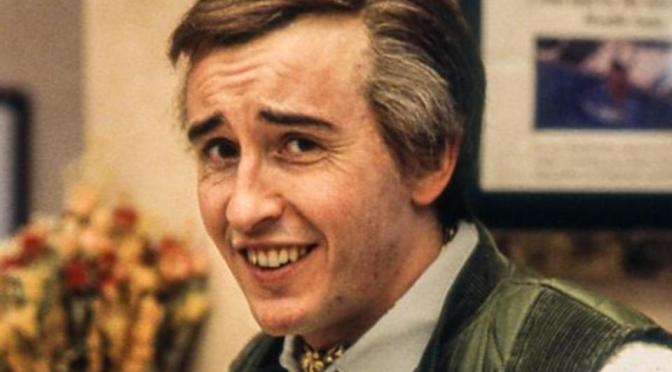


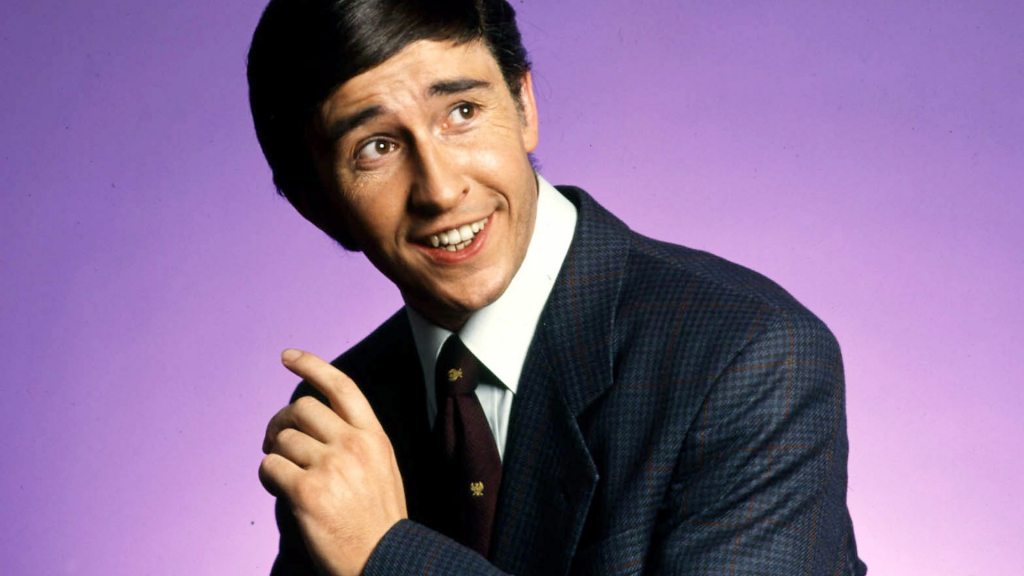

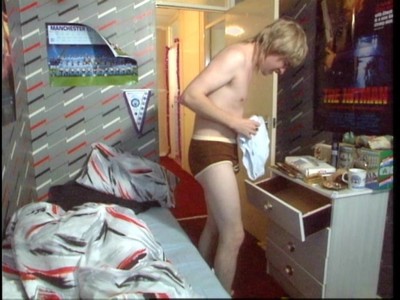
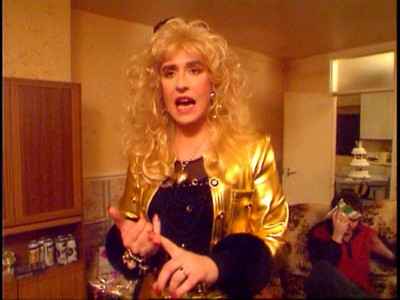




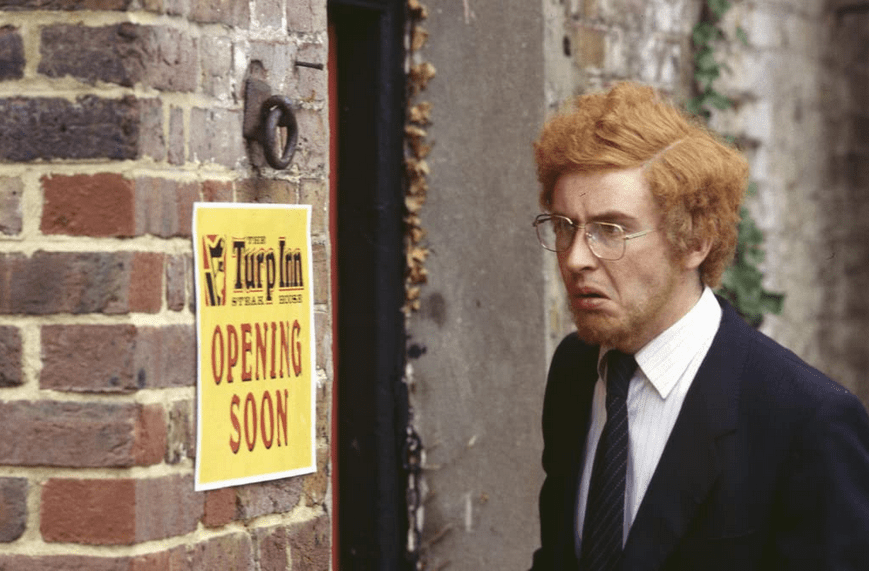


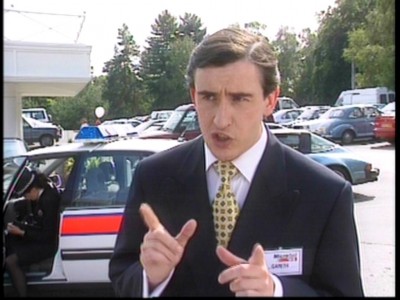

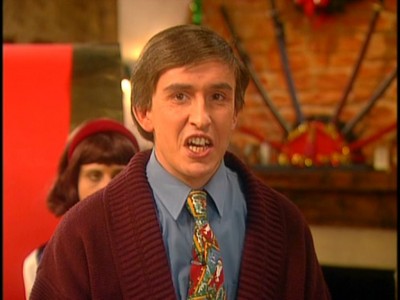





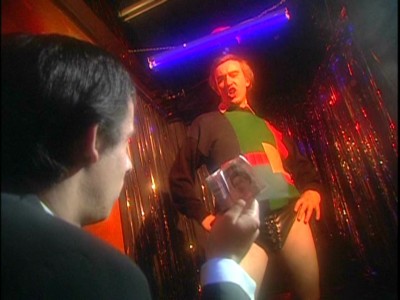


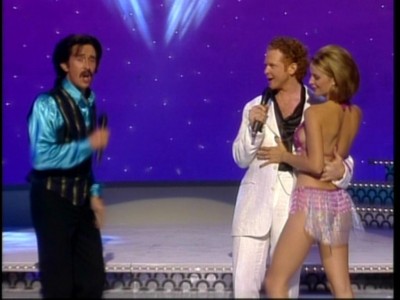

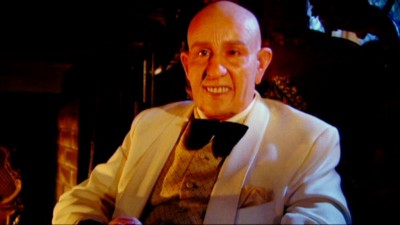



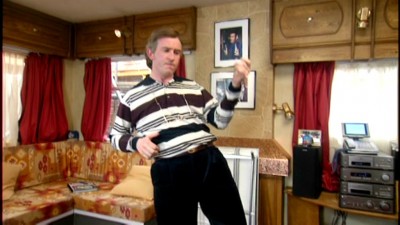



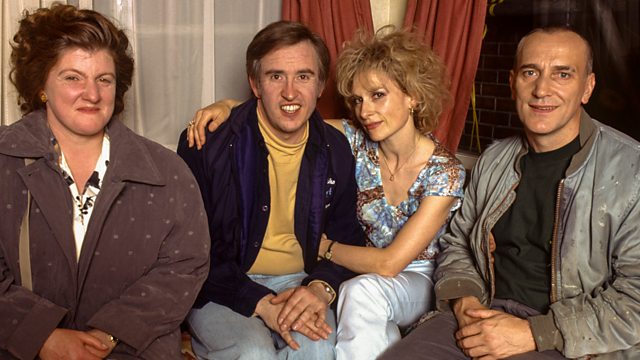
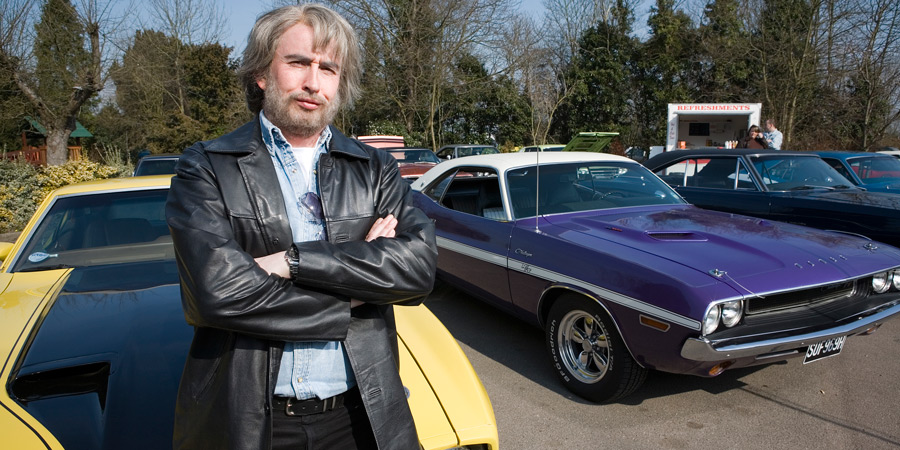
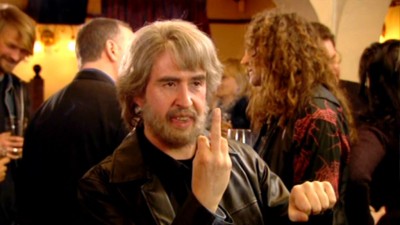



Great review as always. In answer to your rhetorical question about the lack of crossover with Coogan, I often wonder if it is the style of comedy that doesn’t appeal/resonate with the American audience as a whole. Full disclosure, I am a Canadian (middle-aged) and found growing up that the “Monte Python” crowd was very localized (even though the only way to view was on a PBS station out of Spokane).
LikeLike
Thanks!
I think that generalization doesn’t hold. I’ve heard it forever, and yet, Monty Python was huge here in the States when it was first shown on PBS stations in the early 1970s. Along with Upstairs Downstairs, it was often credited with really getting PBS up and running as a viable nationwide concern (well…that and taxpayer money, unfortunately). MP’s success in America indeed led to their move into movies, which substantially elongated their collective careers. That whole, “Americans don’t get British humor” is just another variation on a theme that runs through so much writing about American audiences from critics and writers who 1)like to see themselves as elitists who “get it” where others don’t, and 2) like to insult other Americans they look down on. One of MP’s biggest, most obsessed fans was none other than Elvis; according to those same critics, he was someone who should never have “gotten” their humor. And yet he did, just as millions of other Americans did, from across all kinds of social strata.
LikeLike
Good points! The USA is 10x the size of Canada and has the demographics to support a wider swath of comedy, maybe? 1 kid in high school liking Benny Hill is an outcast whereas 10 kids could be a fan club? No projecting my childhood experience here…
LikeLike